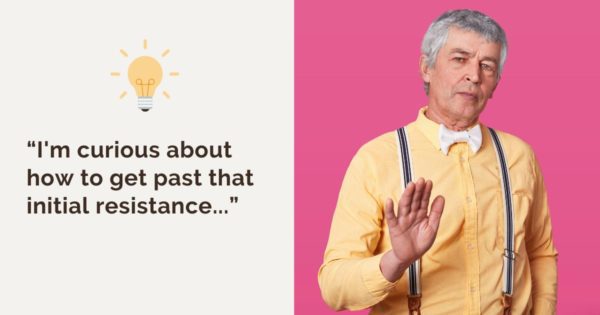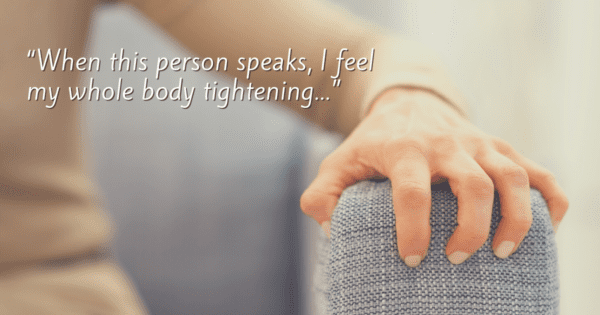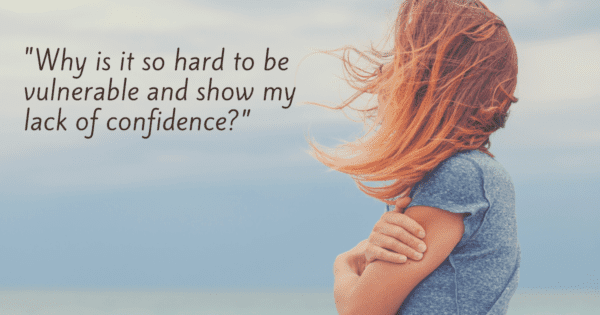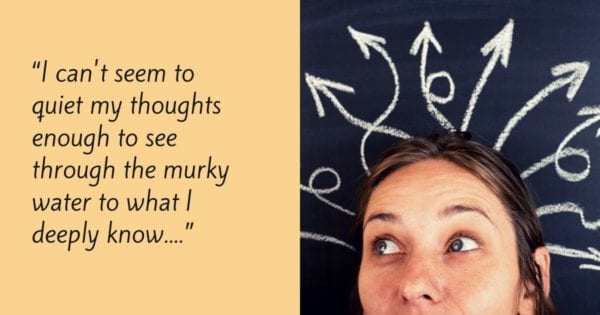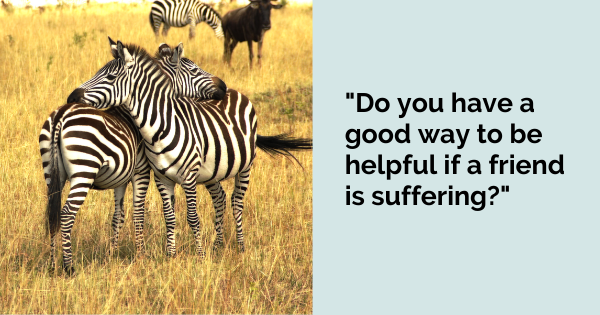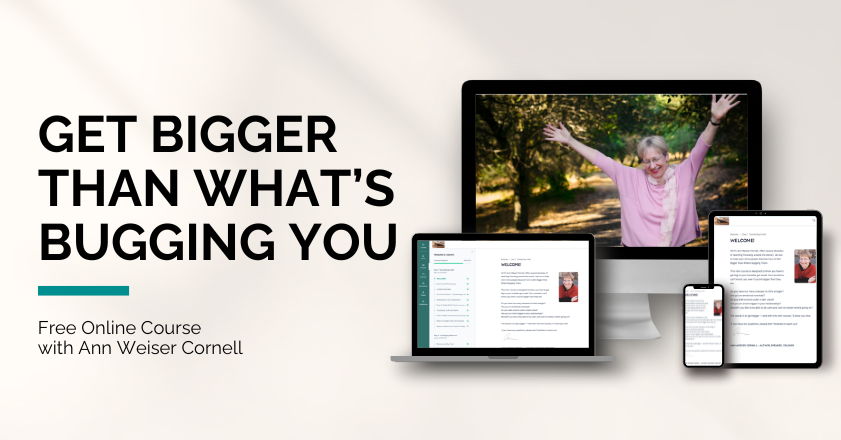If you’re wondering what setting a boundary even looks like, you’re not alone!
Listen in as Ann Weiser Cornell takes you through a time when she was just learning what it meant to have boundaries. Then she’ll take you through an exercise to help you figure out what your own boundaries might be.
What Are My Boundaries, Anyway? Part One
What Are My Boundaries, Anyway? Part Two
Transcript of both videos:
What Are My Boundaries, Anyway? Part One:
One thing that can be really confusing about creating healthy boundaries is even knowing what your boundaries are. I remember a time years ago when I was in a workshop led by another teacher, we were invited to pair up and stand about 10ft away from another person. The assignment was to invite the other person to walk slowly toward us, and stop the person when they got close enough. Well, the person walked right up to me, and bumped into me because I never got the feeling, “Okay, that’s close enough.” And that’s what it’s like to have no boundaries or not know what our boundaries are.
It was like this for me for years, I was wide open. People could ask me for things, and I would say yes, or they would tell me what they thought of me, and I would believe it was true. And then in reaction to that, I would put up huge boundaries, like a fortress, withdrawfrom everyone and say no to everything. I didn’t know how to find that middle ground where I can sense what I need to say no to and what I want to let in.
For me, learning to know what my boundaries are was a gradual process. What I’d like to do today is share with you some tips so it doesn’t have to be as gradual for you.
Well, the first thing that happened for me was realizing later that something had violated my boundaries. This happened in two main ways:
One, I realized later that I had said yes to something that I really didn’t want to do or that wasn’t right for me to do.
And two, I realized later that someone had said something that hurt me, but I didn’t say anything at the time because I didn’t feel it until later. It was like coming home and finding bruises on your body and then realizing that someone had punched you. So saying “Ouch” or “I don’t like that” when someone says something hurtful to you is a boundary issue. “You don’t get to talk to me like that,” Or if it’s not safe to confront the person, then at least be unable to withdraw from the situation and acknowledge and care for the inner feelings.
So the first thing that happened was that I became aware later that something had crossed my boundaries, sometimes literally months later. And then that time began to get shorter because I was learning to be aware of myself. Months got down to weeks and weeks then got down to days. I remember how exciting it was when I actually realized later in the same evening that an interaction with another person had crossed my boundaries.
Okay, so the first step for you is to be aware of times in the past when an interaction crossed your boundaries and you wish you had protected yourself better, no matter how long ago that was.
The next step will be to ask, “what got in the way of knowing that at the time?”
“How come I didn’t know that at the time?”
“What was between me and knowing that at the time?”
Those are three different ways to phrase that same question. So it could have been some notion of politeness or not wanting to hurt the other person, or old family patterns where you’re not supposed to ever contradict the other person. And this is something you can get curious about and explore.
And then the final step would be to ask yourself, “what resource would I have needed at the time in order to know and speak up about that boundary?” Okay, and this can really get you some interesting discoveries and help you get your boundary superpowers in order.
All right, so I’m going to take you through these three steps in the audio exercise. That’s part of the bonus, and before we go there, let me just add this: I finally got to the place where I could feel and speak up about my boundaries in a kind way in the interaction as it was happening rather than later. And that was truly amazing.
And there’s one more skill we need to be able to do that, and that is the skill of pausing. I might not know anything yet, but I at least know I need to pause. And I can say that “I need a minute” or “I need some time or wait.” If I’ve been practicing being aware of my boundaries and getting closer and closer to the present moment, then in that pause I can probably feel what I need to be aware of.
The pause is priceless, so in the pause check in with your body. Do you feel something in you? Tense, guarded, uncomfortable? That’s a good sign that something is going on that needs to be addressed. It’s okay to ask for even more time from the person if it’s hard to know at the time what you need to say. Okay, so next, when you have some time, click on the exercise download and we’ll do the exercise.
What Are My Boundaries, Anyway? Part Two:
Okay, so this exercise is to be done at a time when you won’t be interrupted, when you’re not driving, when you can settle into a comfortable, supported position. And let’s get started. So just take your time to be aware of your body right now. Just checking that you’re in a comfortable, supported position. Maybe you need to move around or stretch. And then feeling more and more aware of your whole body.
You might be sitting, lying down, standing, but however your body is positioned, just be aware of where you’re touching something. Like if you’re standing, that would be just through your feet. If you’re sitting, it’s your feet, underside of your legs, buttocks, maybe your back. Being aware of that sensation of touch, whatever your body is in contact with right now. And feeling your breathing.
You’re just being aware of your breath and allowing your awareness to come inward.
Now sensing into that inner area of your body that includes your throat, your chest, stomach, and that whole abdomen area, just arriving within your body. Feeling, simply sensing your awareness inside. Because this is where you may begin to feel as we go through the exercise. So we’re open to what you become aware of there.
Okay, good. And now take some time to remember a time in the past when someone said something that hurt you or bothered you and you didn’t even know your reaction until later. Or a time when someone asked you to do something and you said yes and you realized later it wasn’t right for you. So basically we’re asking you about a time when you didn’t know at the time that something crossed your boundary. Any example of that will be great.
So just pausing a moment to let yourself remember a time… you might have remembered one right away. Let’s take a little time for those who need it. Okay? And feel free to pause the recording here and take even more time if you haven’t come up with such an instance yet.
So you just need to remember that time when something like that happened. Something, someone said something that hurt you, bothered you, but you didn’t know your reaction until later. Something asked you to do something or say something, and you didn’t know until later that that wasn’t right for you to do.
Okay, so now in the inner area of your body, invite a sense of something in you that didn’t allow you to know at the time. So we’re going to assume that there was something in you that didn’t allow you to know, “oh, that crossed my boundary”, or “that hurt me”. Something in you didn’t allow you to know, or there was something in the way of knowing. We don’t have to know what that was in order to say, I just want to get to know that part of me better.
So there’s something in me that didn’t allow me to know at the time that that crossed my boundary. Just invite and wait. Feel in the body and be open to whatever occurs. Take a little time. You may get a body sensation, an image, some thoughts, some words, family situations may occur to you. Memories. It’s all good. Something in you that didn’t allow you to know at the time that that didn’t work for you. Whatever that person said, we’re pausing again to give some time for that again. Whatever you become aware of is perfect. It might be vague, it might be immediate, and if you need more time, just pause the recording.
We want to especially know that whatever does come in response to our invitation, this is not to criticize or judge it or try to change it. So we’re inviting in the spirit of gentleness. Something in me didn’t allow me to know that, okay? I just want to get to know it better. Okay, so you’ve got some sense of that part of you that got in the way, that didn’t allow you to know it.
Now invite it to let you know what it was worried might happen if you knew your own needs and could speak up about them. What was it worried would happen if you were aware of your needs at that time? What was it worried would happen if you knew, “Ouch, that hurt?” Or “no, I don’t want to do that.” What was it trying to protect you from by not letting you be aware of your own needs at that moment? Then just ask and wait. And then whatever occurs, whatever comes up, words, images, ideas, body feelings, it’s all good. If you need more time, you can pause the recording.
So something came. Something occurred. There was a response. Maybe it was something about not feeling you have the right to do it, or maybe feeling you didn’t want a confrontation. Maybe something just felt scared. There are many possibilities.
So whatever came for you, let it know you hear it, like you are simply responding to it. As a listener, I hear you. Oh, that’s how it is. I hear you. Not to judge it, not to try to change it, but just to really hear it. And this step may bring a little relief, a sense of release. Just notice if there’s a shifting in your body when you really acknowledge, “I hear you,” to this part of you.
Ok, we have one more step. This is a nice one. Still sensing in the body. Take some time to sense what resource you would have needed in order to be able to know and feel your own needs at the time. So, working with that same incident, sensing what resource you would have needed in order to be able to know and feel your own needs at the time at the time it happened, and pausing what resource you would have needed in order to know and feel your own needs at the time, maybe you would have needed to feel safe. Maybe you would have needed some models, some people around you who were doing that too.
Just pause and sense what it is for you. And then when you get it, take some time to sense if you have that resource. How does that feel in your body? Your body knows how to show you what it would feel like to have that resource that everyone you needed then, and pausing to sense that…what it would feel like to have that resource. Great.
That may need more time as well. In fact, if this step feels good, it definitely is great to take more time just to feel that in your body. It feels good. Expansive, solid, strong, spacious, flowing, whatever it is for you. Great.
Feel free to repeat this exercise as often as you like.
And we’ll come right now to a gentle completion, which we do by pausing to sense what you’d like to remember and then also thanking your body, thanking yourself, and then becoming aware again of the room around you and the feel of your body in contact with something very good. If you feel like making some notes now, that might be a good idea. Talk to you later.

